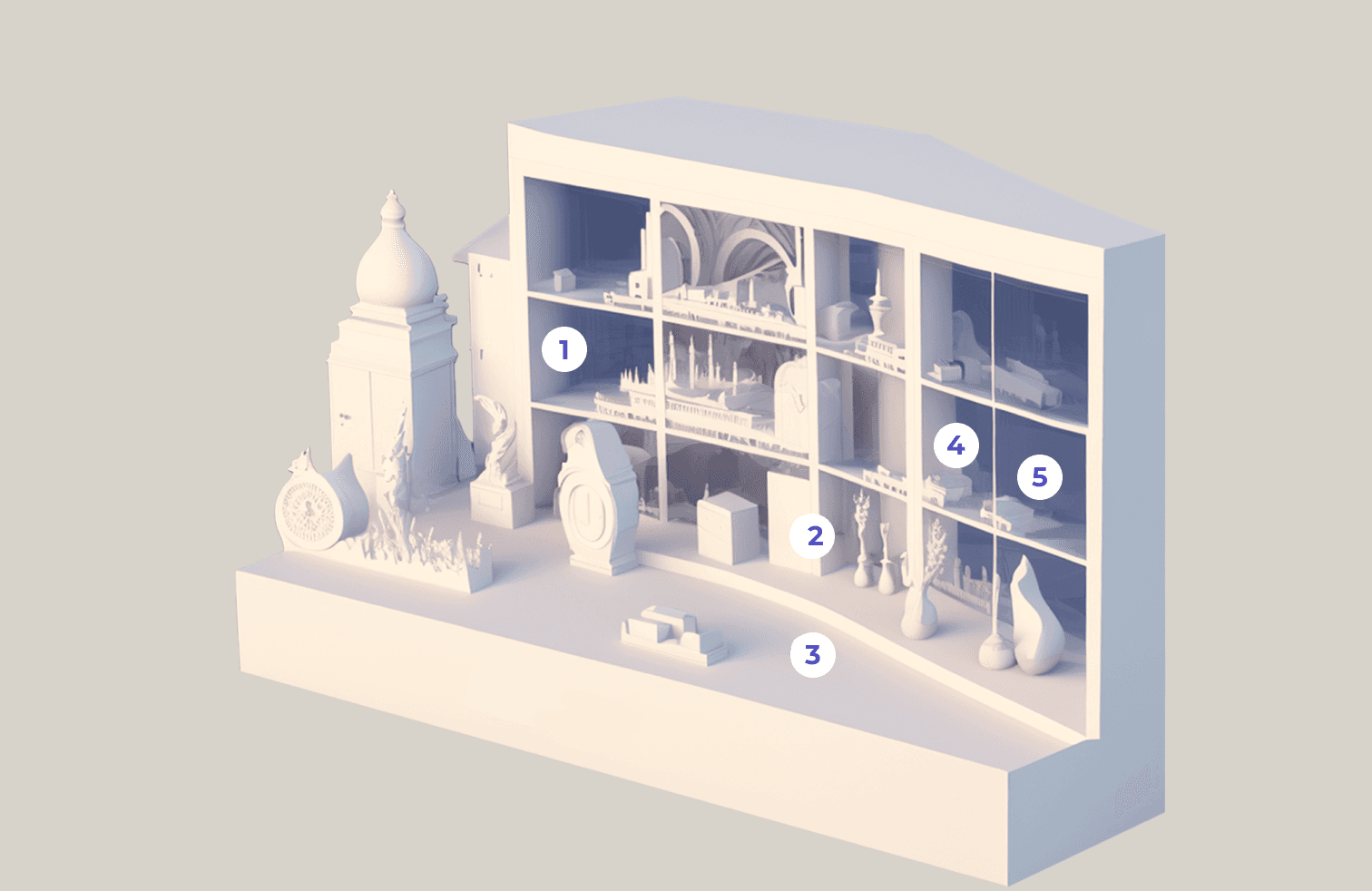About
About
About

In our research as new media artists and educators, we have found that commercial 3D image libraries (virtual storefronts with digital assets used in game design, Hollywood special effects, etc) almost exclusively sell depersonalized and culturally non-specific 3D objects for mass consumption and mainstream use. Employed across many domains, from VR experiences to corporate marketing, these models are conservative in form and structure, and anchored in a capitalist studio production mold. They are devoid of a provenance, an aura (in Walter Benjamin’s terms), and a sense of history.
The limitations of the commercial asset libraries create a media landscape that reinscribes notions of false neutrality, reaffirming Audre Lorde’s “mythical norm” postulation, privileging representations of a material culture for the “white, thin, male, young, heterosexual, Christian, and financially secure”. Biases within the 3D model marketplace undergird marginality and shape a narrative that misrepresents the “real world” – erasing diverse experiences, voices, and cultural objects.
We are currently developing the Missing Object Library (MOL), a web-based curated repository of hand-made digital objects that fill a void in the existing offerings from companies who provide fully rendered 3D models to “game developers, news agencies, architects, visual effects studios, advertisers, and creative professionals around the world” (TurboSquid). MOL disrupts historical gatekeeping performed by “neutral” marketplaces by offering 3D modeled objects with an intersectional lens spanning a wide range of identities beyond the white, cis, heteronormative domain. MOL expands the possibilities of new media art and commercial projects by providing creators with a carefully curated library of models that consider a range of social categorizations such as race, class, gender, and disability.
In our research as new media artists and educators, we have found that commercial 3D image libraries (virtual storefronts with digital assets used in game design, Hollywood special effects, etc) almost exclusively sell depersonalized and culturally non-specific 3D objects for mass consumption and mainstream use. Employed across many domains, from VR experiences to corporate marketing, these models are conservative in form and structure, and anchored in a capitalist studio production mold. They are devoid of a provenance, an aura (in Walter Benjamin’s terms), and a sense of history.
The limitations of the commercial asset libraries create a media landscape that reinscribes notions of false neutrality, reaffirming Audre Lorde’s “mythical norm” postulation, privileging representations of a material culture for the “white, thin, male, young, heterosexual, Christian, and financially secure”. Biases within the 3D model marketplace undergird marginality and shape a narrative that misrepresents the “real world” – erasing diverse experiences, voices, and cultural objects.
We are currently developing the Missing Object Library (MOL), a web-based curated repository of hand-made digital objects that fill a void in the existing offerings from companies who provide fully rendered 3D models to “game developers, news agencies, architects, visual effects studios, advertisers, and creative professionals around the world” (TurboSquid). MOL disrupts historical gatekeeping performed by “neutral” marketplaces by offering 3D modeled objects with an intersectional lens spanning a wide range of identities beyond the white, cis, heteronormative domain. MOL expands the possibilities of new media art and commercial projects by providing creators with a carefully curated library of models that consider a range of social categorizations such as race, class, gender, and disability.
In our research as new media artists and educators, we have found that commercial 3D image libraries (virtual storefronts with digital assets used in game design, Hollywood special effects, etc) almost exclusively sell depersonalized and culturally non-specific 3D objects for mass consumption and mainstream use. Employed across many domains, from VR experiences to corporate marketing, these models are conservative in form and structure, and anchored in a capitalist studio production mold. They are devoid of a provenance, an aura (in Walter Benjamin’s terms), and a sense of history.
The limitations of the commercial asset libraries create a media landscape that reinscribes notions of false neutrality, reaffirming Audre Lorde’s “mythical norm” postulation, privileging representations of a material culture for the “white, thin, male, young, heterosexual, Christian, and financially secure”. Biases within the 3D model marketplace undergird marginality and shape a narrative that misrepresents the “real world” – erasing diverse experiences, voices, and cultural objects.
We are currently developing the Missing Object Library (MOL), a web-based curated repository of hand-made digital objects that fill a void in the existing offerings from companies who provide fully rendered 3D models to “game developers, news agencies, architects, visual effects studios, advertisers, and creative professionals around the world” (TurboSquid). MOL disrupts historical gatekeeping performed by “neutral” marketplaces by offering 3D modeled objects with an intersectional lens spanning a wide range of identities beyond the white, cis, heteronormative domain. MOL expands the possibilities of new media art and commercial projects by providing creators with a carefully curated library of models that consider a range of social categorizations such as race, class, gender, and disability.
Awards: C/Change R&D Lab Award from Goethe Institut SF and Gray Area
Berkeley Center for New Media Seed Award
Awards: C/Change R&D Lab Award from Goethe Institut SF and Gray Area
Berkeley Center for New Media Seed Award
Awards: C/Change R&D Lab Award from Goethe Institut SF and Gray Area
Berkeley Center for New Media Seed Award
Team Members
Team Members
Team Members
© MOL 2023